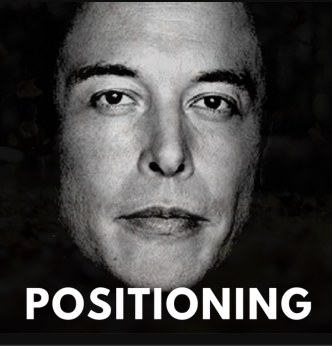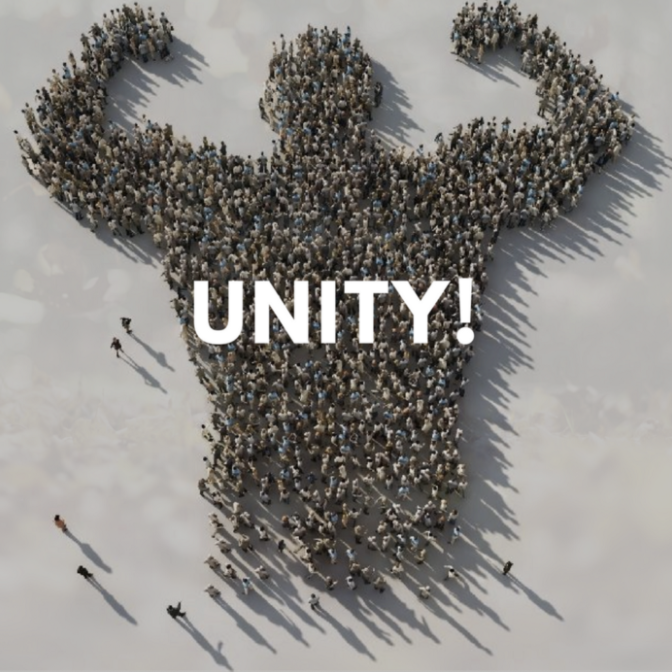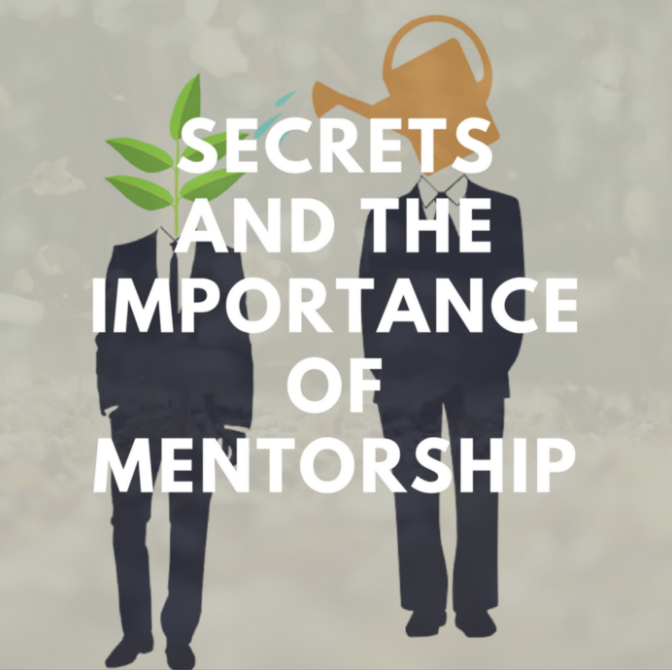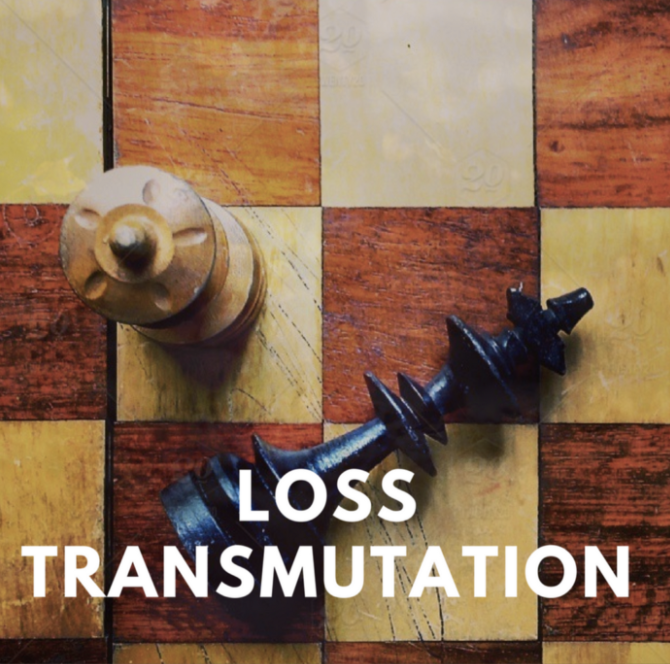Since being introduced to the world by the Ultimate Fighting Championships nearly 25 years ago, Brazilian jiu-jitsu has exploded in popularity. While it may seem like a facile art — it involves little to no hitting, just what looks like complicated wrestling — there is something special here, something transformative.
That is why it’s moving from a subculture into the mainstream with celebrities like Demi Lovato, Ashton Kutcher, Anthony Bourdain and Keanu Reeves, as well as intellectuals and authors like Sam Harris, Ryan Holiday and Tim Ferriss training in and raving about it.
Why is jiu-jitsu becoming so popular? And what can it teach anyone, let alone entrepreneurs? Aside from being considered one of the most effective forms of self-defense, it’s healthy, social, empowering, interesting and a hell of a lot of fun. Beyond all of its physical benefits, it’s a life hack. Let’s take a look at just a few of the many powerful life lessons jiu-jitsu teaches.
#1 Positioning

Jiu-jitsu is known for enabling the smaller person to overcome the bigger person. How? What’s the secret? Positioning. From a good position, things are easy, from a bad one they are difficult. A big person you stand in front of is far more dangerous than one you stand behind.
The classic example from The Art of War — when fighting on a hill, fight from the top, facing downward. Gravity is on your side and works against the opponent. Even better is to have the sun behind you — it becomes difficult for the opponent to see. The idea is to find or create positions that have natural advantages.
Fifteen years ago, I had an idea for a large-scale impact project. It was going to take years just to articulate. Working 50 to 60 hours per week, I wasn’t in position to make it happen. I didn’t control my time. Entrepreneurship was the ultimate positional improvement because it would one day give me the freedom to write when I wanted.
In jiu-jitsu, we say “Don’t try to win from where you are. Try to get into such a good position that winning is inevitable.” Rather than engage in direct battle from a weak position, position yourself so that all advantages are in your favour.
Positioning in business and/or marketing often refers to how an audience or a market sees a certain brand. Are they number one? Are they the coolest? Most reliable? This is an important factor, but one’s position in the traditional sense is made up of an array of factors. You may post losses this quarter but have just signed enough clients to make the next year better than the last decade. You may have lost your star salesperson, but actually improved team atmosphere. On paper, you are “losing”, but your position has improved.
Elon Musk’s story is one of brilliant positioning. Dreaming of space travel since childhood, Musk developed a knack for technology early. At 12, he sold a video game he had developed on his own for $500. He studied science and economics before moving to California to start his PHD which he left after two days to start his first business, Zip2 with his brother for $28,000. Being ahead of the technology curve, Musk’s Zip2 served a market notoriously slow to adopt technology — newspapers — offering them city-guide software. Over four years, Zip2’s clients grew to over 160 major publications and was sold for $307 million. Musk received $22 million, with which, seeing an opportunity in online financial services, he launched X.com which later became PayPal. In 2002, eBay bough PayPal for $1.5 billion — Musk’s 11% share earned him $165 million. It was with this windfall, he was able to start his first space-travel company, Space X, as well as Tesla, Solar City, Hyperloop and more, and has positioned himself to actually shift the collective direction of humanity towards a bright, sustainable future.
What is happening in your market and in the world at large that you can leverage to better position yourself? What are the hidden strengths and weaknesses in your current position?
#2 Survival

Checkmate in jiu-jitsu is called a submission — you force your opponent to give up, which they signal by tapping you or the ground. A submission happens because you are either causing one of your opponent’s limbs to go beyond its natural range of motion or choking them unconscious.
Your first job in jiu-jitsu is to not get submitted. You can’t win if you’re out of the game.
For small business, survival is often a question of cash flow. As businesses get larger, the dynamics may change, but you can’t have a successful business if you don’t stay in business.
One of the first things you learn in jiu-jitsu is “posture” — how to keep safe in bad positions.
Generally, you want to keep our assets — your limbs — close and try to prevent the opponent from having the opportunity to isolate and attack them. Before you move forward, you have to take a solid position which prevents your opponent from pushing you backward.
A business mentor once asked me what my business would look like if I trimmed monthly expenses by $10,000. I couldn’t even imagine — until I was forced to.
If some surprise required you to operate with a greatly reduced operating budget, could you? Do you know how to contract your operation to endure choppy waters?
#3 Incremental Positioning

Once you have ensured you can survive in a bad spot, how do you get to a good spot? It would be nice if we could go from a terrible position to a good position with one crafty move, however life seldom works like that. On the mats we learn instead to focus on improving our position just 1% at a time. Far less taxing.
As leaders, we must dream of success in leaps and bounds — we must see beyond the horizon to chart our company’s course. But success rarely happens in leaps.
The traditional path to opening a martial arts school is to lease a space, buy the equipment and open up shop. I launched my first school, a women-only Brazilian jiu-jitsu academy, kimonogirl, with one Sunday class per week out of a tiny, remote yoga studio. One grew to two and two grew to five across three locations until we were presented with the opportunity to rent space from a big-box fitness gym in the most central possible location in Toronto, which is where I ultimately launched my current academy, OpenMat.
If I had gone down the typical path, I would have been out of business within weeks. The incremental path allowed me to build slowly until I had a small but solid, sustainable school. It was from that position that I attracted my first investor, enabling me to leap, launching one of the largest, most popular martial arts schools in Toronto.
Small, incremental improvement in our position led, in time, to an otherwise unattainable goal.
In The Art of War, they say you can’t make the opponent vulnerable — all you can do is make yourself invulnerable and build your position while you wait for them to leave an opening. And when the opening comes, you charge through “[with] the momentum of a round stone rolled down a mountain thousands of feet in height.”
You may not be able to take the #1 position in your industry today, but small, solid steps ensure you can make constant progress.
Have you been focused on big leaps or tiny steps forward? What are some small steps you can take to improve your position? How can you position yourself to — one day — take big leaps?
#4 Unity Is Strength

In BJJ, it usually takes time for beginners to learn to use their body as a single unit. If, for example, someone is on top of you and you want to unseat them, you’ll often try to push with one arm, then the other, then maybe both. Then, perhaps you’ll bridge, before going back to using your arms. As you progress in skill, you learn to use your whole body simultaneously, as a single unit.
Though it may sound simplistic, united we are strong. Without this principle, you will never be able to meet your potential.
For entrepreneurs, this applies in two ways: to your team and to you as leader.
If you have a team, do they work as one or fight amongst themselves? Do you have tools in place to enable them to work together? And what can you do to take their coordination and cooperation to the next level? (If you haven’t considered corporate jiu-jitsu, nothing brings a team closer. Google, Electronic Arts and many others have in-house programs — should you?). But more deeply, is your purpose compelling enough to get them to put aside any differences and band together in challenging times? According to both renown author and speaker Simon Sinek and The Art of War, purpose trumps everything else when talking about uniting a group.
Unity applies not just to teams, but to each of us individually. As an entrepreneur, you are a leader. As a leader, you have to be on your own side.
There have been times in all of our lives when our “self-talk” has been toxic. Our thoughts can work against us. In jiu-jitsu you are forced to confront this voice every day and develop tools for “turning the negative critic into the positive coach,” as Dan Mac writes in Mind Gym: An Athlete’s Guide to Inner Excellence, a book that has had a massive impact on me — on and off the mats.
Are you “united”? Sports psychology says the middle-of-the-road fighter who believes in themselves is just as, if not more dangerous than the highly skilled fighter who doubts themselves. Are you good at staying on your own side or are you overly self-critical? Do your daily routines strengthen or weaken you? What can you do to make both your habits and self-talk more empowering?
#5 Secrets and the Importance of Memberships

You can have unity and still not know what to do. What makes jiu-jitsu so empowering is that is shows you techniques and strategies for making the impossible easy.
What’s most scary for the untrained person when facing a bigger, faster, stronger opponent is not knowing what to do.
All of jiu-jitsu is based on one “secret” — one strategy for overcoming any opponent:
1. Close the gap: get close enough to hug them — they need distance to hit effectively
2. Take them down: tackle, trip, throw, etc,
3. Get to the mount: climb on top so you sit on their stomach while they lay prone.
Simply understanding that concept, even without training makes you instantly tougher because it gives you a plan.
Secrets are merely powerful pieces of information we don’t yet know. How do you learn secrets? Theoretically, you could tinker and “figure out” jiu-jitsu without instruction, but it would take you decades. A mentor shortcuts that process.
I ran my first school for five years before I began mentoring with more successful people in my industry. And as a result, I grew more in the following year than I had in the previous five.
Recently, a new mentor introduced an idea for a promotion. With one week of hard work, strong unity among the team and the school as a whole, that month was as successful as the previous three combined.
Do you have a business mentor? It doesn’t always need to be a formal relationship or even a relationship at all. Internet marketer and self-improvement teacher Tai Lopez considers books a form of mentorship, and today, videos, podcasts and even some Instagram accounts provide insight, wisdom and strategy from some of the great business thinkers of our time.
Have you had a mentor impact your trajectory? Who are some thinkers and leaders you look up to? Are you seeking them out and learning from them?
#6 Growth Hacking: Theory vs Practice

Secrets can be powerful, but how do you know they are real? You cannot take it for granted; you must test it yourself.
Many grappling arts contain the same techniques as BJJ. Japanese jiu-jitsu, for example, may employ of the same techniques but trains them very differently. As with so many traditional martial arts, Japanese jiu-jitsu tends to be practiced with planned cooperation. I hold you in this way, you apply your technique, but I don’t try to stop you while you’re doing it. It turns out that things work very differently when someone is actually resisting. Reality doesn’t always match theory, so knowing what to do is not enough. You must constantly test your theories.
Perhaps the most significant factor in jiu-jitsu’s success as a martial art, aside from its core strategy and philosophy of adaptability, is the training method by which it is practiced. Randori. Sparring. “Rolling.” The practice of trying to apply your techniques against a skilled, resisting opponent. It is in this crucible of sweat and strategy that we gain a greater understanding of what works and what doesn’t.
In the business world, traditional product development looks something like: 1) spend months or years and millions of dollars to come up with the perfect product; 2) spend millions more to market it and hope people buy; 3) succeed or fail.
Ryan Holiday’s Growth Hacker Marketing discusses the secrets of growth behind companies like Amazon, Uber, Facebook and Evernote. With the advent of the internet, a new model, “growth hacking”, has emerged. Growth hacking is the process of 1) creating a “minimum viable product” (MVP) that you think will be effective with/liked by consumers; 2) testing that product with actual customers; 3) making changes to the product based on feedback; 4) repeating steps 2 and 3 until you have a kick-ass product and a horde of testers/future customers already invested in the product’s success.
“Growth hacking is a process of rapid experimentation across marketing channels and product development to identify the most effective, efficient ways to grow a business. Growth hacking refers to a set of both conventional and unconventional marketing experiments that lead to growth of a business.” (Wikipedia)
Jiu-jitsu works the same way. You have your own MVP — a certain technique or strategy you have practiced enough to try against resistance; you try it in sparring; if it works, great, and you see how it can become more efficient; if not, you examine why.
Jiu-jitsu is growth hacking. It is taking small, efficient steps to improve your position while using your failures to expand your understanding.
Have you been working with an untested assumption? What are small tests you can create to get quick, actionable feedback on those assumptions? How can you build your position — knowledge, customer base, experience — while honing your offering?
#7 Fight, Flight, or Third Option Thinking

Typically, we are taught that there are two responses to conflict: fight or flight. The Art of War teaches us that there is a third option: planning ahead.
For defending oneself, training jiu-jitsu is that third option.
Finding oneself in a physical confrontation would surely trigger a panic response in most people, causing them to either freeze or run (flight) or engage with unskilled ferocity (fight). By training jiu-jitsu, we prepare ourselves for those situations so that if they arise, we are much more likely to be able to maintain control of ourselves and our situation. It’s contingency planning.
Years ago we had a flood that caused $30,000 in damages and almost shut us down.
How could we have prepared for this? When revenue and cash flow were strong, spending was too. Had we practiced operating on a more disciplined budget, that situation would not have had the same impact.
What are the unwanted situations you as an entrepreneur need to be ready to handle and what can you do to prepare for them effectively? What would you do if suddenly you lost your key client or employee? What plans can you map out to prepare for these unwanted scenarios?
#8 Adaptability: Flow With The Go

Jiu-jitsu is unimaginably empowering. You learn techniques that allow you to completely dominate a larger person or easily escape what looks like a desperate position.
As you gain confidence in a technique you may be tempted to “insist.” Go to use it, it doesn’t work, you try to force it. This is a waste of energy.
Jiu-jitsu teaches that when one door closes, another opens. As your opponent stops your first technique, they inevitably leave an opening for another. Rather than insist on forcing something that isn’t working, adapt. Be willing to change directions.
Passionate about providing a place where women could access the incredible empowerment jiu-jitsu offers, I had my heart set on having a massively successful women’s jiu-jitsu school nearly 15 years ago. Even today with the growing popularity of mixed martial arts, that would be tough. Being willing to change plans and offer co-ed classes was what enabled me to not only survive, but thrive.
Have you ever tried to force a strategy after the circumstances for which it was designed had changed? Are you doing this now? What other ways or opportunities have you not considered? How can you adapt to best take advantage of your current situation?
#9 Loss Transmutation

Renown psychologist Carol Dweck’s book Mindset: The New Psychology of Success describes a way of thinking observed to be a hidden factor in success and happiness: the growth mindset. “Individuals may not necessarily be aware of their own mindset, but . . . it is especially evident in their reaction to failure. Fixed-mindset individuals dread failure because it is a negative statement on their basic abilities, while growth mindset individuals don’t mind or fear failure as much because they realize their performance can be improved and learning comes from failure.”
In jiu-jitsu, we won’t always survive. We will get submitted. We will sometimes get injured. We will experience defeat. How we respond is up to us. It can be tempting to get angry or down on ourselves. Instead, jiu-jitsu teaches that we can turn every loss into a lesson. If someone was able to choke you, there must have been some opening you left which enabled them to do so. If you get angry or depressed, you waste an excellent opportunity to upgrade your skills.
Even injury can be a boon. From 2011 to 2016, former UFC Champion Dominick Cruz suffered what Joe Rogan called “one of the most difficult trials in terms of recovery from injury in the entire history of [MMA].” Multiple tears (groin and ACL) and surgeries kept him out of the cage for four years. In a recent interview on Rogan’s podcast, Cruz describes the experience as a gift. The seemingly endless string of injuries forced him to let go of control, which ultimately boosted his spirits enough to recover, return to fighting and regain his belt. “You need to let go of fighting to learn that you are something without it. And that was actually a gift — it became a gift because I learned so much about life.”
With the investment I received years ago came a new management team. Those looking after the books fumbled massively, neglecting to pay sales tax for years. One day, with no warning, the government took $20,000 from our account and then closed it. We had no way to pay staff, let alone ask them to continue to work while we sorted things out. Though generally optimistic, that night it felt like the walls were closing in. I could not see how we would stay open.
This seemingly terrible situation turned out to be a massive blessing.
Almost every staff member I shared the bad news with offered to stay on for free until the ship was righted — unity! Moreover, it forced me to make sure the books were in order. Even if the situation doesn’t magically turn around, you can always rely on the lesson. Thankfully we survived that experience, but imagine if we were to grow the business exponentially and then have to learn that lesson. Though it was tough at the time, thank goodness for it.
Both practically and as an attitude, you owe it to the people you serve to find — or far better, make — good in every loss.
Some of our greatest insights in business — and life — can come from our losses. What are the three biggest lessons you’ve learned in the last two years? Are there losses you’ve experienced recently? As Tony Robbins teaches to ask “What’s good about this?”
10. Mental Jiu-Jitsu: Turning Problems into Questions

Jiu-jitsu teaches that life will throw problems your way. You will get taken down, you will get mounted, you will get submitted. But if you get mounted, there is no value in lamenting that fact. Reminiscing about the good old days when you were on top is a waste of energy. The only thing that actually matters is what you do now.
When someone repeatedly takes you down, it exposes a weakness in your “game,” your skillset. Rather than see it as a problem, realize that jiu-jitsu is simply asking you a question: How do you stop that takedown?
Finding out our accountant dropped the ball was a catastrophe. . . until the moment I asked, “How do we make sure this never happens again?” The moment you reframe your problem as a question, it ceases to be a problem. It becomes a challenge. It’s a shift from thinking about the past or unpleasant present to focusing on a plan for a better future.
You will face “problems” in life. Can you accept them and ask, “How has the situation changed? What is the best path forward from here? What’s the right first step?”
Has a setback ever made you feel stuck? Is that you, right now? How can you turn that problem into a challenge through the power of questions? What questions is life posing to you by your being in this position?
_____
These ten are just the tip of the iceberg in terms of the wisdom one gains through this beautiful art.
If you’re a success-minded entrepreneur who doesn’t train, I highly encourage you to start. Find a reputable jiu-jitsu instructor where you jive with and just start. If flexibility is a priority, book private lessons. If you just don’t have the time, start learning online. (My own site, BJJ101.tv just launched — check it out.)
If you’re not an entrepreneur, well . . . you’re wrong! You really are, but that’s the topic for another time. If you already train BJJ, what are some life lessons you’ve gained that haven’t been mentioned here? Post them in the comments so we can all learn from them.
If, as they say, all things are one, then we can learn about life from any endeavour — painting, hiking, engineering. Jiu-Jitsu just happens to be the most fun. 🙂


Recent Comments